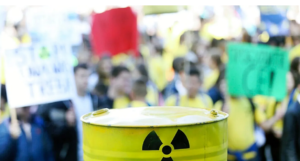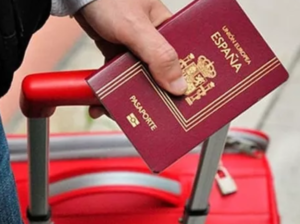
According to SIPRI, the top ten companies (in terms of revenue from arms sales and military services) in 2024 are as follows:
1. Lockheed Martin (USA) – $64.65 billion (+3.2% compared to 2023)
2. RTX Corporation (USA) – $43.6 billion (+4.1%)
3. Northrop Grumman (USA) – $37.85 billion (+3.3%)
4. BAE Systems (UK) – $33.79 billion (+6.9%)
5. General Dynamics (USA) – $33.63 billion (+8.1%)
6. Boeing (USA) – $30.55 billion (-4.6%)
7. Rostec (Russia) – $27.12 billion (+26%)
8. AVIC (China) – $20.32 billion (–1.3%)
9. CETC (China) – $18.92 billion (–10%)
10. L3Harris Technologies (USA) – $16.21 billion (+6.6%)
Together, these ten corporations account for the lion’s share of global defense industry revenue and set the technological and manufacturing bar for other players.
SIPRI (Stockholm International Peace Research Institute) is an independent international research institute working in the field of conflict, armaments, arms control, and disarmament. The institute was established in 1966 by a decision of the Swedish Parliament and operates as an independent foundation with headquarters in Stockholm (Solna).
SIPRI publishes data, analysis, and recommendations based on open sources, which are widely used by governments, international organizations, researchers, and the media. The organizational structure includes
SIPRI’s funding includes an annual grant from the Swedish government and funds from other organizations; the institute emphasizes that it does not accept funding that could influence the independence of its research and discloses its sources of support.
Among SIPRI’s most cited products are the SIPRI Yearbook and open databases, including those on international transfers of major conventional weapons (since 1950) and on military expenditures of countries worldwide (time series since 1949, updated annually).
Source: https://expertsclub.eu/top-10-svitovyh-vyrobnykiv-ozbroyen-u-2024-roczi-za-versiyeyu-sipri/

According to Serbian Economist, the Croatian parliament has approved a law paving the way for the construction of a radioactive waste management center at the Čerkezovac site on Trgovska Gora Mountain in Sisak-Moslavina County, less than a kilometer from the border with Bosnia and Herzegovina.
According to the law, the Čerkezovac site will become the central facility for storing low- and medium-level waste from the Slovenian-Croatian Krško Nuclear Power Plant, as well as so-called “institutional” radioactive waste from Croatian hospitals and industry. The site is located approximately 800 m in a straight line from the BiH border and about 1 km from the water intake of the Novi Grad community, which supplies drinking water to about 15,000 people.
The adopted act creates a regulatory framework for the design and construction of the facility and establishes Čerkizovac as a priority location for a waste management center. Geological surveys, seismic risk assessments, and measurements of the “zero” radiation background have already been carried out at the site, as reported by the Croatian side in documents sent to international organizations.
A surface storage facility is planned to operate until the 2090s, after which the waste will be transferred to a deep geological repository.
Strong reaction from Bosnia and Herzegovina
Zagreb’s decision has been strongly criticized by politicians and environmental activists in Bosnia and Herzegovina. The country’s authorities had previously set up interdepartmental expert and legal groups to follow up on the issue at international forums and insist that the facility poses a risk to the Una River, border communities, and drinking water supplies.
Political parties and authorities in BiH consider the law to be a violation of the principles of good neighborliness and are demanding that Croatia reconsider its decision or seek an alternative site, citing, among other things, the Espoo Convention on Environmental Impact Assessment in a Transboundary Context.
The Croatian side, in turn, states that the environmental impact assessment procedure will include the participation of the public and the competent authorities of BiH.
https://t.me/relocationrs/1977

According to data from the Permanent Immigration Monitoring Center (OPI) under the Spanish Ministry of Social Policy and Migration, as of September 30, 2025, 7,426,481 foreign citizens had valid residence permits in the country. This is 4.5% more than a year earlier.
Of this number, 54% (about 4 million people) are citizens of EU, EFTA, and UK countries who have an EU citizen registration certificate or a TIE foreigner card under the UK’s withdrawal agreement from the EU. The most numerous nationalities in this group are Romanians, Italians, and British: they account for 51% of all European residents.
The Ukrainian community stands out as a separate block in the statistics. According to data based on official statistics from the Spanish Ministry of Social Policy and Migration, as of September 2025, more than 326,000 Ukrainian citizens have a valid residence permit in the country. A significant portion of this number are people who received protection under the EU Temporary Protection Directive, introduced after the full-scale invasion of Ukraine by the Russian Federation in February 2022.
The growth of the Ukrainian diaspora was particularly sharp in 2022–2023, but slowed significantly in 2024–2025: while the annual increase at the height of the war was measured in triple digits, by the fall of 2025 it had fallen to single digits.
After Brexit, the British remain one of the three largest European communities in Spain, alongside the Romanians and Italians. The official OPI report does not provide the exact number of British citizens in its public summary, but emphasizes that these three nationalities account for more than half of all residents from the EU/EFTA and the UK.
A characteristic detail is the age profile of the British diaspora. The average age of British residents is significantly higher than the average among foreigners and is around 57, reflecting Spain’s popularity as a country for retirees and a “second home” for British citizens.
Thus, by the end of 2025, Spain will remain one of the key EU countries in terms of the number of permanent foreign residents, and the structure of migration will gradually shift: European communities will continue to dominate, but citizens of Ukraine and Latin American countries will play an increasingly important role.
http://relocation.com.ua/more-than-326000-ukrainian-citizens-have-a-valid-residence-permit-in-spain/

Agrofirma Troyan (Kyiv) has announced that it will hold an extraordinary general meeting of shareholders remotely (by poll).
According to a statement in the regulated information disclosure system, voting will take place by submitting ballots to the depositary institution: the start of ballot acceptance is December 22, 2025 (11:00 a.m.), and the end of registration and voting is December 30, 2025 (6:00 p.m.).
The agenda of the meeting includes, in particular, the election of a counting commission, amendments to the charter and approval of the new version of the charter, as well as approval of the property rights purchase and sale agreement (taking into account the amendments) concluded by the company with Akroninvest LLC.
The company also reported that the previously submitted notice of the meeting, posted on December 11, was withdrawn due to technical errors, after which a corrected notice was published in the information disclosure system.
PJSC Agrofirma Troyan (EGRPOU code 03359658) was registered on September 20, 2001, in Kyiv, with a charter capital of UAH 53.03 million. The head of the company is Petro Vakulchuk. The main activity according to the Classification of Economic Activities is the organization of building construction; other activities include real estate transactions and construction. According to the registers, the ultimate beneficial owner is Vasyl Khmelnytsky.

Cherkasy Chemical Fiber PJSC (Cherkasy) will hold a remote extraordinary general meeting of shareholders on December 24, 2025, according to a statement from the company.
According to the notice, voting will take place by sending ballots to the depositary institution, with a deadline for submission of 6:00 p.m. on December 24.
The agenda includes, in particular, the election of a counting commission, the approval of a package of additional agreements with Sens Bank JSC to the credit line agreement and security agreements, as well as the granting of powers to conclude further additional agreements on these documents. In addition, the shareholders plan to terminate the powers of the current members of the supervisory board ahead of schedule and elect a new supervisory board through cumulative voting.
Cherkasy Chemical Fiber is the only manufacturer of viscose textile yarns in Ukraine. The key operating unit of Cherkasy Chemical Fiber is the Cherkasy Thermal Power Plant, which heats and supplies hot water to most of the city.
Cherkasy Chemical Fiber, SHAREHOLDERS, shareholders' meeting

On Monday, December 22, there will be no precipitation in Ukraine, with only light rain and wet snow in some parts of the northeast during the day, according to the Ukrainian Hydrometeorological Center. Most western, central, and southern regions will experience fog at night and in the morning. The wind will be predominantly northwesterly, 3-8 m/s.
The temperature at night will range from 2°C to 3°C below zero, and during the day from 0°C to 5°C; in Zakarpattia and the south of the country, the temperature at night will range from 0°C to 5°C, and during the day from 3°C to 8°C.
There will be no precipitation in Kyiv on Monday. The wind will be northwesterly, 3-8 m/s. Temperature at night around 0°C, during the day 1-3°C.
According to data from the Boris Sreznevsky Central Geophysical Observatory, the highest daytime temperature in Kyiv on December 22 was 10.0°C in 1989, and the lowest nighttime temperature was -20.2°C in 1967.
On Tuesday, December 23, there will be no precipitation in Ukraine, with only light wet snow in the south-west of the country during the day (with rain in Zakarpattia and Odesa regions) and icy roads in some places. The wind will be mainly from the north, 3-8 m/s.
Temperatures at night and during the day will range from -3°C to +2°C (during the day in Zakarpattia and the south of the country, +1-6°C).
No precipitation in Kyiv on Tuesday. Winds will be mainly from the north at 3-8 m/s. Nighttime temperatures will range from 0 to 2° below zero, and daytime temperatures will range from 0 to 2° above zero.